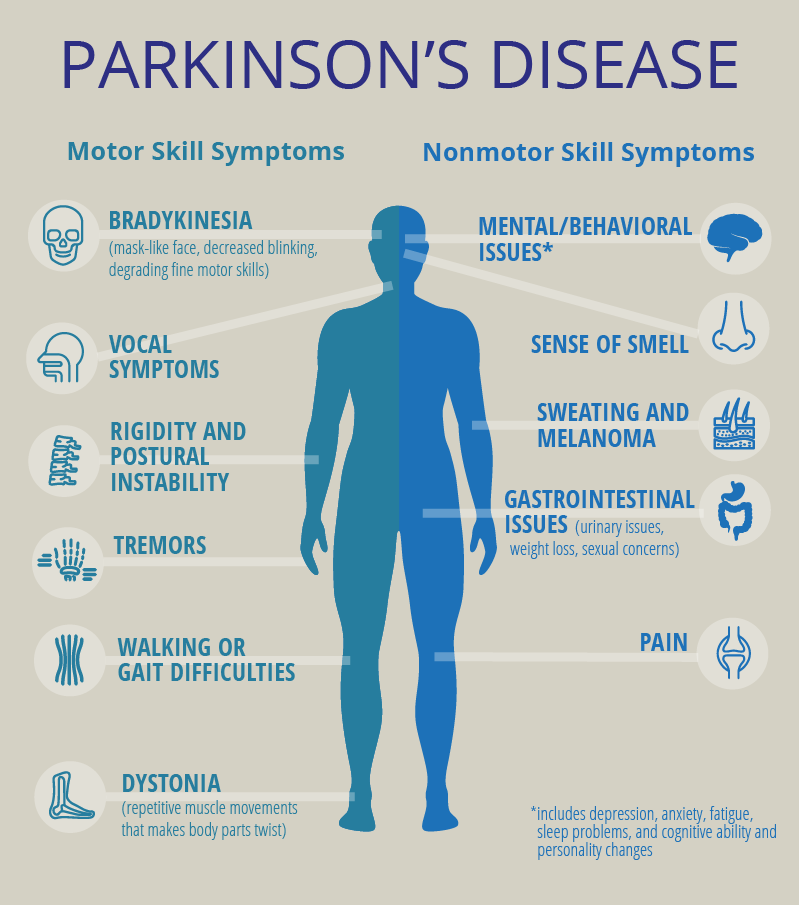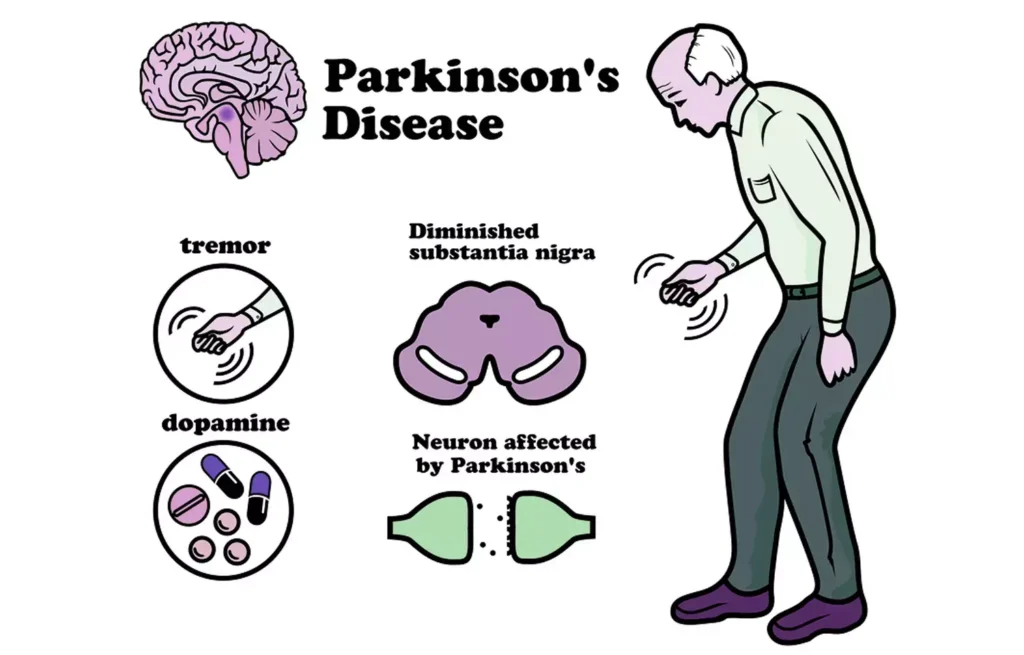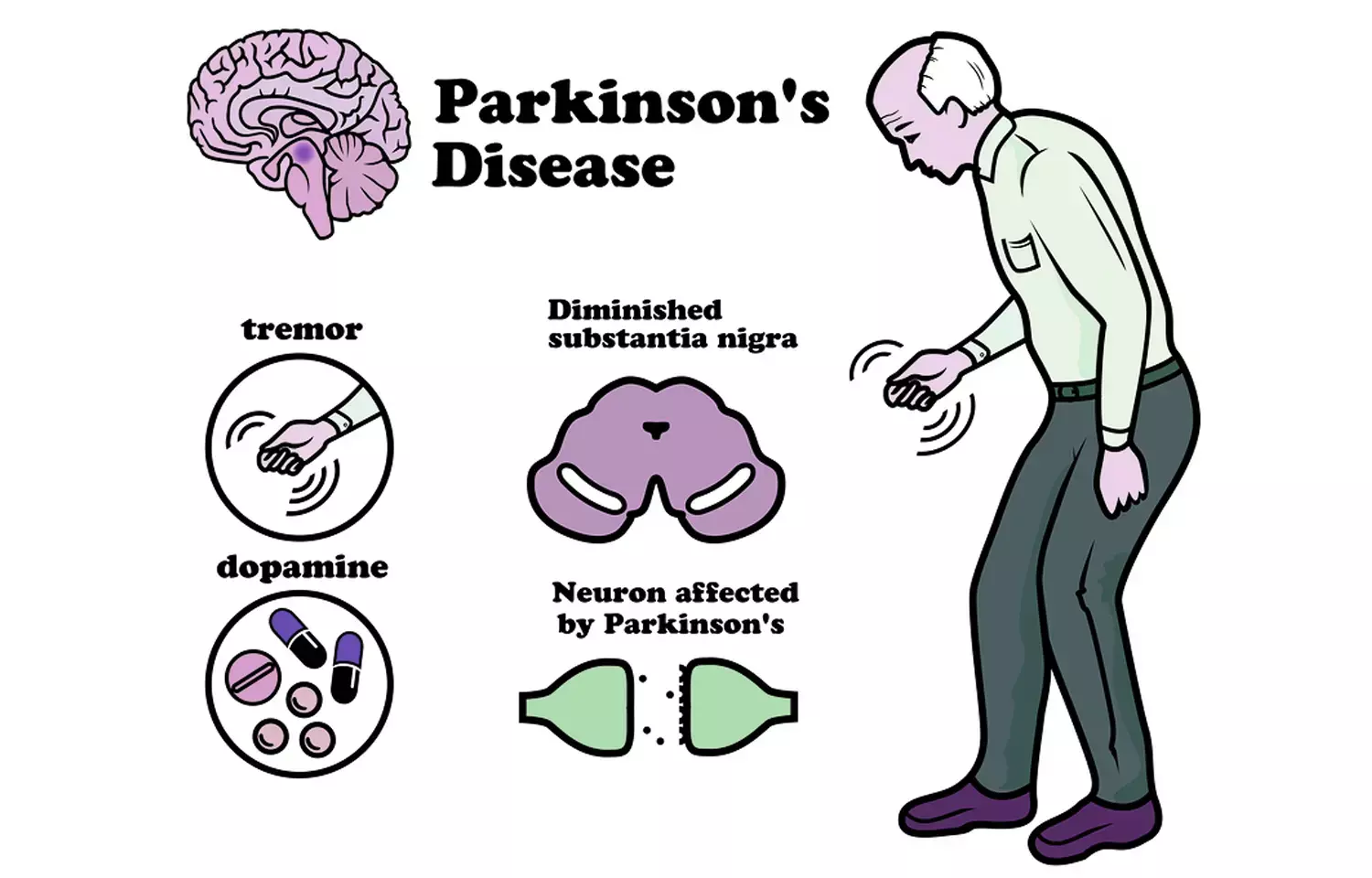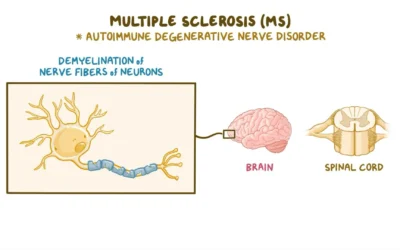Parkinson’s disease (PD) is a progressive neurodegenerative disorder that affects movement, causing a range of physical and cognitive challenges for those diagnosed. It is one of the most common neurological diseases, affecting millions worldwide, with a significant impact on patients, caregivers, and healthcare systems. While the exact causes of Parkinson’s remain unclear, advances in research are helping to better understand the disease, its symptoms, and potential treatment options.
In this article, we’ll explore the causes, symptoms, and the latest advances in treatment for Parkinson’s disease. Whether you’re a patient, caregiver, or simply interested in learning more, this guide offers an in-depth overview of the condition and current therapies.
Table of Contents
- Introduction: What is Parkinson’s Disease?
- Causes of Parkinson’s Disease
- 2.1 Genetic Factors
- 2.2 Environmental Factors
- 2.3 The Role of Dopamine
- Symptoms of Parkinson’s Disease
- 3.1 Motor Symptoms
- 3.2 Non-Motor Symptoms
- Advances in Parkinson’s Disease Treatment
- Living with Parkinson’s Disease: Coping Strategies
- Conclusion: Hope for the Future of Parkinson’s Disease Treatment
Introduction: What is Parkinson’s Disease?
Parkinson’s disease (PD) is a progressive disorder of the nervous system that primarily affects movement. It is characterized by the degeneration of dopamine-producing neurons in the brain, specifically in an area called the substantia nigra. Dopamine is a chemical messenger responsible for transmitting signals that control smooth and coordinated muscle movements. When dopamine levels decrease, it leads to the characteristic motor symptoms associated with Parkinson’s disease, such as tremors, stiffness, and bradykinesia (slowness of movement).
Parkinson’s disease is not limited to motor symptoms alone; it also affects cognitive functions, emotions, and the autonomic nervous system. While the disease generally progresses slowly, it can significantly impact a person’s quality of life.

Causes of Parkinson’s Disease
The exact cause of Parkinson’s disease remains unclear, but scientists believe it results from a combination of genetic and environmental factors. Research into these causes has gained momentum in recent years, helping to shed light on how Parkinson’s develops.
2.1 Genetic Factors
Genetic mutations play a role in a small percentage of Parkinson’s cases. Researchers have identified several genes associated with an increased risk of Parkinson’s, such as the LRRK2 and SNCA genes. While these genetic mutations are rare, they contribute to our understanding of the disease’s development.
In some families, Parkinson’s disease may run in generations, suggesting an inherited genetic predisposition. However, it’s important to note that most Parkinson’s cases are sporadic, meaning they occur without a family history.
2.2 Environmental Factors
Exposure to certain environmental toxins, such as pesticides or herbicides, has been linked to an increased risk of developing Parkinson’s disease. Studies have suggested that living in rural areas or working in agricultural settings may raise the likelihood of developing the disease, although the exact mechanisms remain unclear.
Additionally, head trauma or brain injury has been associated with an elevated risk of Parkinson’s, particularly in cases of repeated concussions or brain injuries.
2.3 The Role of Dopamine
Dopamine is a neurotransmitter produced in the substantia nigra, which plays a crucial role in movement control. In Parkinson’s disease, these dopamine-producing neurons begin to degenerate and die off, leading to a reduction in dopamine levels. This lack of dopamine is what causes the hallmark motor symptoms of Parkinson’s, such as tremors and rigidity. Researchers are investigating ways to restore or replace dopamine to alleviate these symptoms.
Symptoms of Parkinson’s Disease
Parkinson’s disease manifests in various ways, and symptoms can vary from person to person. They can be broadly categorized into motor and non-motor symptoms.
3.1 Motor Symptoms
Motor symptoms are the most recognized and typically include:
- Tremors: Involuntary shaking or trembling, most often starting in one hand, fingers, or foot. This is usually the first symptom of Parkinson’s disease.
- Bradykinesia (Slowness of Movement): People with Parkinson’s may experience difficulty initiating movement, leading to slow and labored motions. This can affect everyday activities, such as getting dressed, eating, or walking.
- Muscle Rigidity: Muscles become stiff and resistant to movement, leading to discomfort and limited range of motion.
- Postural Instability: People with Parkinson’s may have difficulty maintaining balance, which increases the risk of falls.
3.2 Non-Motor Symptoms
In addition to motor symptoms, many people with Parkinson’s experience non-motor symptoms, which can be just as debilitating. These include:
- Cognitive Impairment: Memory problems, difficulty concentrating, and confusion can occur, particularly in the later stages of the disease. In some cases, Parkinson’s disease can lead to dementia.
- Mood Disorders: Depression, anxiety, and apathy are common in individuals with Parkinson’s disease, affecting their emotional well-being.
- Sleep Disorders: Many individuals with Parkinson’s report disrupted sleep, including insomnia, vivid dreams, or excessive daytime sleepiness.
- Autonomic Dysfunction: Parkinson’s can affect the autonomic nervous system, leading to problems like low blood pressure, constipation, and urinary issues.
Advances in Parkinson’s Disease Treatment
While there is no cure for Parkinson’s disease, significant progress has been made in its treatment. The goal of treatment is to alleviate symptoms and improve the quality of life for patients. Current treatments include medication, surgical interventions, and emerging therapies.

4.1 Medications
The most common medication used to treat Parkinson’s disease is levodopa, a precursor to dopamine. Levodopa helps replenish dopamine levels in the brain, improving motor symptoms. However, over time, levodopa may become less effective, and side effects like involuntary movements (dyskinesia) can occur.
Other medications used in treatment include:
- Dopamine agonists: These mimic the effects of dopamine in the brain.
- MAO-B inhibitors: These inhibit the breakdown of dopamine in the brain, helping to prolong its effects.
- COMT inhibitors: These prolong the effect of levodopa by blocking its breakdown.
4.2 Deep Brain Stimulation
Deep Brain Stimulation (DBS) is a surgical procedure that involves implanting a device that sends electrical impulses to specific parts of the brain. DBS can help reduce motor symptoms and improve quality of life, particularly in patients who no longer respond well to medications. This procedure is typically considered for people with advanced Parkinson’s disease.
4.3 Gene Therapy and Stem Cell Research
Exciting advancements in gene therapy and stem cell research hold potential for treating Parkinson’s disease in the future. Scientists are exploring the possibility of using gene therapy to introduce genes that could help restore dopamine production in the brain.
Stem cell therapy is another promising area, with researchers investigating ways to regenerate damaged dopamine-producing neurons. While these treatments are still in the experimental stages, they represent hope for a cure in the future.
Living with Parkinson’s Disease: Coping Strategies
Living with Parkinson’s disease can be challenging, but there are various strategies to help manage the symptoms and improve quality of life.
- Physical Therapy: Regular exercise and physical therapy can help maintain mobility, flexibility, and strength, reducing muscle stiffness and improving balance.
- Speech and Occupational Therapy: Speech therapy can help with swallowing and speaking difficulties, while occupational therapy provides strategies for daily tasks to improve independence.
- Support Groups: Connecting with others who have Parkinson’s disease can provide emotional support and a sense of community. Caregivers also benefit from support groups, where they can share experiences and coping strategies.
Conclusion: Hope for the Future of Parkinson’s Disease Treatment
While Parkinson’s disease remains an incurable condition, ongoing research and advancements in treatment continue to offer hope for patients. From medications that manage symptoms to innovative surgical procedures and emerging therapies, there are more options than ever to help people live fulfilling lives despite the challenges of Parkinson’s disease.
As scientists work to unravel the complex causes of Parkinson’s and develop new therapies, the future looks promising. Whether through genetic discoveries, stem cell therapy, or improved surgical interventions, the battle against Parkinson’s disease is far from over. With continued progress, we can look forward to better treatments and, one day, a potential cure.


